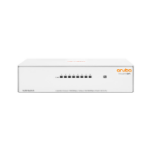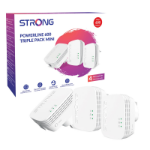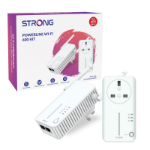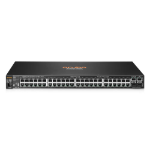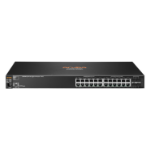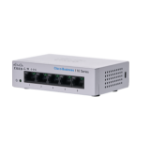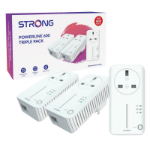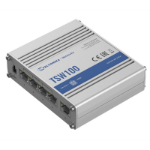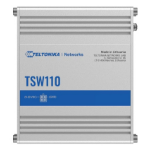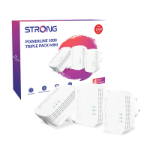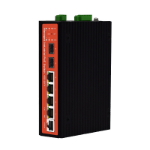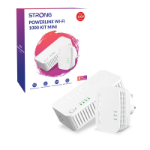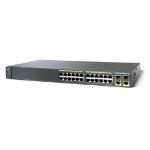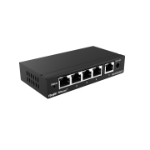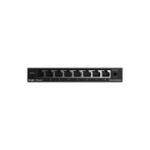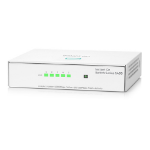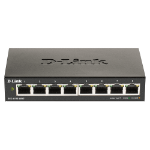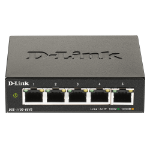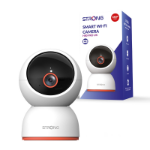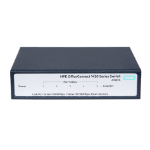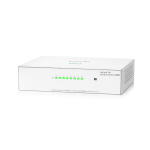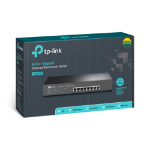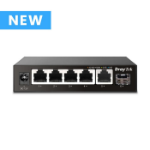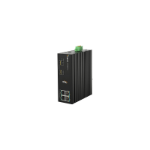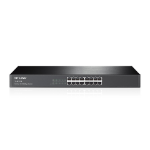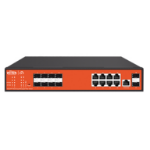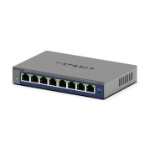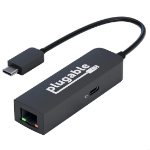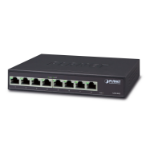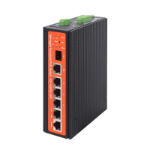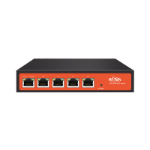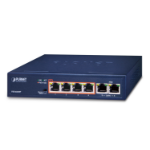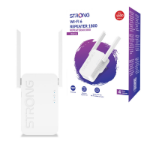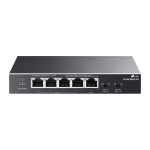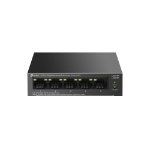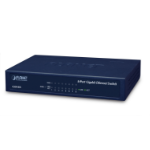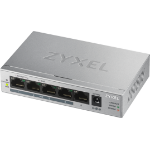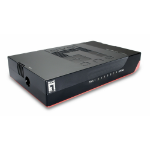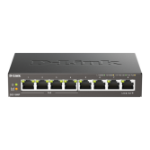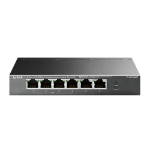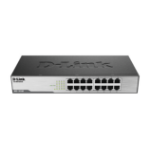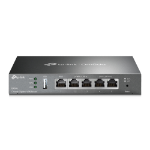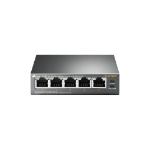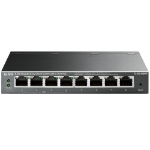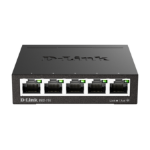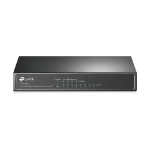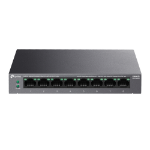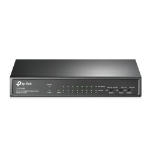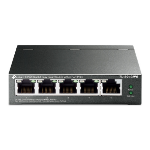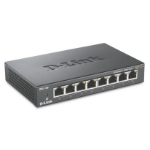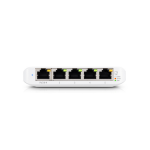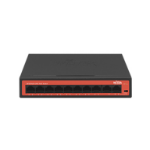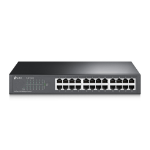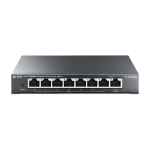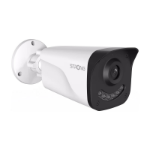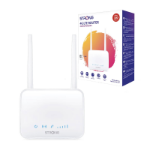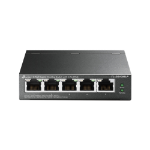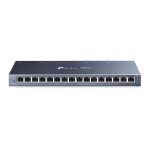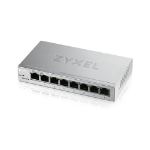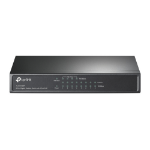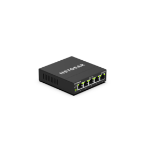HPE ProCurve 2510-48G Managed L2 1U Black
£40.67
£33.89
2510-48G Switch, Refurbished
| Power over ethernet | No |
|---|---|
| Stackable | Yes |
| Ports quantity | 48 |
| SKU | J9280A-RFB |
| EAN | 5704327784654 |
| Manufacturer | HPE |
| Availability | In Stock |
| Product Family | ProCurve |
| Product Series | E2510 |
Designed to provide essential solutions to small and medium businesses, the HP 2510 Switch Series consists of four Layer 2-managed switches that provide reliable 10/100 and 10/100/1000 connectivity. Building off of the popularity of the HP 2510-24 Switch, a 24-port 10/100 switch with two dual-personality ports, the 2510 switch series has expanded to include a higher-density HP 2510-48 Switch, with 48 10/100 ports and four Gigabit Ethernet uplinks. Additionally, the 2510-G switches add Gigabit Ethernet to the 2510 series, with the 2510G-24 and 2510G-48 switches, which are 24- and 48-port 10/100/1000 switches, each with four dual-personality ports, making them ideal for businesses that are ready to upgrade to increased network performance.
Features
Quality of Service (QoS)
- IEEE 802.1p prioritization: delivers data to devices based on the priority and type of traffic
Connectivity
- 10/100 and 10/100/1000 connectivity: provides customers with the choice of selecting the network connectivity speed that best meets their needs, with a consistent user experience
- Gigabit uplinks: E2510-24 and E2510-48 switches: the E2510-24 switch has two dual-personality ports for either 10/100/1000 or mini-GBIC connectivity; the E2510-48 switch has four Gigabit Ethernet ports, which can all be used concurrently with two 10/100/1000 ports and two open mini-GBIC slots. E2510G-24 and E2510G-48 switches: four dual-personality ports for 10/100/1000 or SFP ports for optional fiber connectivity such as Gigabit-SX, -LX, and -LH, or 100-FX.
- HP Auto-MDIX: automatically adjusts for straight-through or crossover cables on all 10/100 and 10/100/1000 copper ports
Resiliency and high availability
- IEEE 802.1s Multiple Spanning Tree: provides high link availability in multiple VLAN environments by allowing multiple spanning trees; provides legacy support for IEEE 802.1d and IEEE 802.1w
- IEEE 802.3ad Link Aggregation Control Protocol (LACP) and HP trunking: - E2510-24 switch supports up to two 10/100 trunks each with four links/ports plus one Gigabit Ethernet trunk. - E2510-48 switch supports up to 24 trunks with eight links/ports per trunk. - E2510-24G & E2510-48G switches support up to 24 trunks with eight links/ports per trunk.
Manageability
- IEEE 802.1AB Link Layer Discovery Protocol (LLDP): provides automated device discovery protocol for easy mapping by network management applications
- RMON: provides advanced monitoring and reporting capabilities for statistics, history, alarms, and events
- Full-featured console: provides complete control of the switch with a familiar command-line interface (CLI)
- Web interface: allows configuration of the switch from any Web browser on the network
- Single IP Address Management: provides single IP address management for a virtual stack of up to 16 switches
Layer 2 switching
- VLAN support and tagging: support up to 64 port-based VLANs and dynamic configuration of IEEE 802.1Q VLAN tagging, providing security between workgroups
- GARP VLAN Registration Protocol: allows automatic learning and dynamic assignment of VLANs
- Jumbo packet support: supports up to 9216-byte frame size to improve the performance of large data transfers (2510G models only)
Security
- Protected ports: provides increased security by allowing specified ports to be isolated from all other ports on the switch; the protected port or ports can communicate only with the uplinks or shared resources
- Multiple user authentication methods: IEEE 802.1X: is an industry-standard method of user authentication using an IEEE 802.1X supplicant on the client in conjunction with a RADIUS server. Web-based authentication: similar to IEEE 802.1X, it provides a browser-based environment to authenticate clients that do not support the IEEE 802.1X supplicant. MAC-based authentication: client is authenticated with the RADIUS server based on the client's MAC address.
- Guest VLAN: isolates guest and unauthorized user traffic to a separate VLAN
- Port security: allows access only to specified MAC addresses, which can be learned or specified by the administrator
- MAC address lockout: prevents particular configured MAC addresses from connecting to the network
Convergence
- IP multicast snooping: automatically prevents flooding of IP multicast traffic
Features
Quality of Service (QoS)
- IEEE 802.1p prioritization: delivers data to devices based on the priority and type of traffic
Connectivity
- 10/100 and 10/100/1000 connectivity: provides customers with the choice of selecting the network connectivity speed that best meets their needs, with a consistent user experience
- Gigabit uplinks: E2510-24 and E2510-48 switches: the E2510-24 switch has two dual-personality ports for either 10/100/1000 or mini-GBIC connectivity; the E2510-48 switch has four Gigabit Ethernet ports, which can all be used concurrently with two 10/100/1000 ports and two open mini-GBIC slots. E2510G-24 and E2510G-48 switches: four dual-personality ports for 10/100/1000 or SFP ports for optional fiber connectivity such as Gigabit-SX, -LX, and -LH, or 100-FX.
- HP Auto-MDIX: automatically adjusts for straight-through or crossover cables on all 10/100 and 10/100/1000 copper ports
Resiliency and high availability
- IEEE 802.1s Multiple Spanning Tree: provides high link availability in multiple VLAN environments by allowing multiple spanning trees; provides legacy support for IEEE 802.1d and IEEE 802.1w
- IEEE 802.3ad Link Aggregation Control Protocol (LACP) and HP trunking: - E2510-24 switch supports up to two 10/100 trunks each with four links/ports plus one Gigabit Ethernet trunk. - E2510-48 switch supports up to 24 trunks with eight links/ports per trunk. - E2510-24G & E2510-48G switches support up to 24 trunks with eight links/ports per trunk.
Manageability
- IEEE 802.1AB Link Layer Discovery Protocol (LLDP): provides automated device discovery protocol for easy mapping by network management applications
- RMON: provides advanced monitoring and reporting capabilities for statistics, history, alarms, and events
- Full-featured console: provides complete control of the switch with a familiar command-line interface (CLI)
- Web interface: allows configuration of the switch from any Web browser on the network
- Single IP Address Management: provides single IP address management for a virtual stack of up to 16 switches
Layer 2 switching
- VLAN support and tagging: support up to 64 port-based VLANs and dynamic configuration of IEEE 802.1Q VLAN tagging, providing security between workgroups
- GARP VLAN Registration Protocol: allows automatic learning and dynamic assignment of VLANs
- Jumbo packet support: supports up to 9216-byte frame size to improve the performance of large data transfers (2510G models only)
Security
- Protected ports: provides increased security by allowing specified ports to be isolated from all other ports on the switch; the protected port or ports can communicate only with the uplinks or shared resources
- Multiple user authentication methods: IEEE 802.1X: is an industry-standard method of user authentication using an IEEE 802.1X supplicant on the client in conjunction with a RADIUS server. Web-based authentication: similar to IEEE 802.1X, it provides a browser-based environment to authenticate clients that do not support the IEEE 802.1X supplicant. MAC-based authentication: client is authenticated with the RADIUS server based on the client's MAC address.
- Guest VLAN: isolates guest and unauthorized user traffic to a separate VLAN
- Port security: allows access only to specified MAC addresses, which can be learned or specified by the administrator
- MAC address lockout: prevents particular configured MAC addresses from connecting to the network
Convergence
- IP multicast snooping: automatically prevents flooding of IP multicast traffic
| Performance | |
|---|---|
| Packet buffer memory | 1.5 MB |
| Stackable | Yes |
| Processor frequency | 264 MHz |
| Noise level | 40.5 dB |
| Memory type | SDRAM |
| Internal memory | 64 MB |
| Flash memory | 16 MB |
| Built-in processor | Yes |
| Processor model | MIPS |
| Technical details | |
| Form factor | 1U |
| Product colour | Black |
| Stackable | Yes |
| Processor frequency | 264 MHz |
| Noise level | 40.5 dB |
| Rack mounting | Yes |
| Built-in processor | Yes |
| Management features | |
| Switch type | Managed |
| Quality of Service (QoS) support | Yes |
| Switch layer | L2 |
| Ports & interfaces | |
| Basic switching RJ-45 Ethernet ports quantity | 48 |
| Network | |
| Networking standards | IEEE 802.1p, IEEE 802.1Q, IEEE 802.1s, IEEE 802.3, IEEE 802.3ab, IEEE 802.3ad, IEEE 802.3u, IEEE 802.3x |
| Full duplex | Yes |
| Spanning tree protocol | Yes |
| Link aggregation | Yes |
| Flow control support | Yes |
| Auto MDI/MDI-X | Yes |
| 10G support | No |
| Data transmission | |
| Throughput | 71.4 Mpps |
| Packet buffer memory | 1.5 MB |
| MAC address table | 8000 entries |
| Supported data transfer rates | 10/100/1000 Mbps |
| Switching capacity | 96 Gbit/s |
| Jumbo frames support | Yes |
| Maximum data transfer rate | 1 Gbit/s |
| Security | |
| SSH/SSL support | Yes |
| Protocols | |
|---|---|
| Management protocols | SNMP 1, RMON 1, RMON 2, RMON 3, RMON 9, SNMP 3, SNMP 2c, HTTP, CLI |
| Memory | |
| Packet buffer memory | 1.5 MB |
| Memory type | SDRAM |
| Internal memory | 64 MB |
| Flash memory | 16 MB |
| Design | |
| Form factor | 1U |
| Product colour | Black |
| Stackable | Yes |
| Rack mounting | Yes |
| Power | |
| AC input voltage | 100 - 240 V |
| AC input frequency | 50 - 60 Hz |
| Power consumption (typical) | 92 W |
| Power over Ethernet (PoE) | |
| Power over Ethernet (PoE) | No |
| Weight & dimensions | |
| Width | 442 mm |
| Depth | 322.6 mm |
| Height | 43.2 mm |
| Weight | 3.9 kg |
| Other features | |
| Latency | < 5.4 µs (FIFO 64-byte packets) |
| Connectivity technology | Wired |
| Authentication method | RADIUS, TACACS+ |



